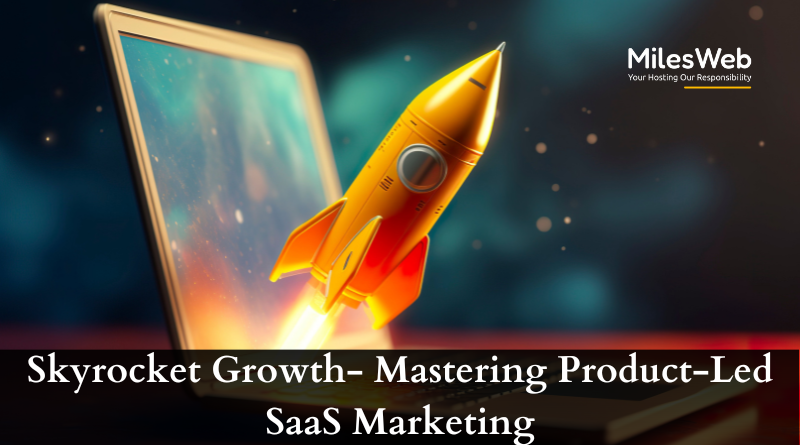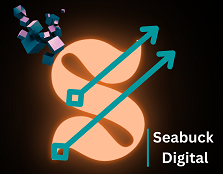
Do you want a competitive edge in this SaaS landscape? Relying on conventional marketing approaches may often struggle to cut through the noise. PLG (Product Led Growth) is a game-changing strategy that shifts the focus from aggressive sales tactics to delivering an exceptional product experience, driving organic adoption. But what does it take to execute PLG successfully? Whether you’re offering SaaS solutions, cheap domain hosting, or free website migration, putting the user experience first ensures seamless onboarding and long-term customer retention.
Don’t just look at the product. Instead, harness the power of PLG and a strategic approach that puts user experience at the forefront. The blog explores the key principles of product-led SaaS marketing and how you can leverage it to accelerate growth, reduce customer acquisition costs, and build a loyal user base. Let’s dive in!
What is Product-Led Growth (PLG)?
Product-driven growth is a go-to-market strategy in which the product itself is the major source of customer acquisition, customer conversion, and customer retention. The concept of PLG is different from the traditional sales-driven models in that, unlike any other, they do not require any intervention from sales to deliver immediate value within a self-serve experience that allows users to try the product before buying it. Imagine Slack, Dropbox, or Zoom: the product is interesting, and users get hooked on the product, so they naturally adopt the product and grow within the company.
A frictionless user experience, easy to get started, and strain built-in virality are guns required to have a successful PLG strategy. Instead, your product itself shows its value through real-world use rather than relying heavily on sales teams for return. One of the keys to becoming an expert at PLG is to think about optimizing the customer journey touchpoints as much as you can to stimulate their engagement and conversion.
The Key Pillars of Product-Led SaaS Marketing
- Frictionless Onboarding
First impressions matter! Any user who is struggling with the product usage won’t get onboarded immediately. A seamless onboarding experience for users ensures that they understand product value instantly. Utilize interactive product tours, tooltips, and in-app guidance to help users get up and running without friction.
Pro Tip: A/B test your onboarding flow to see what steps lead to the highest activation rates.
- Freemium & Free Trials
Users must get the taste of a product before they purchase it. This is a strong PLG tactic. A well-structured freemium model or time-limited free trial helps users experience the core value of your product. It leads to higher conversion rates. However, the key is to strike a balance between offering enough features for engagement and reserving premium functionalities for paid plans.
Ask Yourself: Does your free plan offer enough value to hook users but still leave room for them to upgrade?
- Virality and Network Effects
PLG grows, and product sharing is increased. Features like referral programs, collaboration tools, and user-generated content can quickly build virality. Also, it can drive exponential growth. Tap the potential of the network effect by encouraging users to invite others, making the product more valuable as people use it.
Action Step: Integrate social sharing and referral incentives to maximize organic growth.
- Data-Driven Product Iteration
The PLG model has one of the most significant advantages, as it has a wealth of user data at its disposal. By tracking user behavior, feature adoption, and drop-off points, you can continuously refine your product for better engagement. Mixpanel and Amplitude are tools that analyze user patterns, enabling data-backed decisions that enhance the product experience.
Key Question: Are you using customer data to fine-tune your product and improve retention?
- Customer Education and Community Building
A well-informed user base is likely to adopt and advocate for the product. Educational content like blogs, webinars, and knowledge bases help users maximize the value of the product. Moreover, a product community around the product encourages engagement and brand loyalty.
Try This: Launch a user forum or customer success webinars to support and educate your users.
Measuring the Success of Your PLG Strategy
However, to know that your product-led strategy is working, you must have your KPIs tracked. Here are the core PLG metrics:
- Activation Rate: The rate of a similar percentage of users that actually achieves the key milestone (setting up the first project or inviting a teammate).
- Product Churn: This refers to the number of users that stop using your product within a predetermined period (also known as customer retention).
- Expansion Revenue: The percentage of revenue from upsells, cross-sells, or increased usage.
Net Promoter Score (NPS) is a metric used to measure user satisfaction and the probability that a user will recommend the user.
The best time for your business to use metrics is every time you study them, which will help refine your PLG strategy for organic growth.
Conclusion
PLG’s strategy is beyond the trend and a transformational approach to SaaS marketing. It puts the product at the center of growth. By focusing on frictionless onboarding, offering a valuable free experience, leveraging network effects, and iterating based on data, you can create a scalable and efficient growth engine.
Now it’s your turn! Have you adopted PLG in your SaaS business? If not, then implement it today itself!
Read More:

